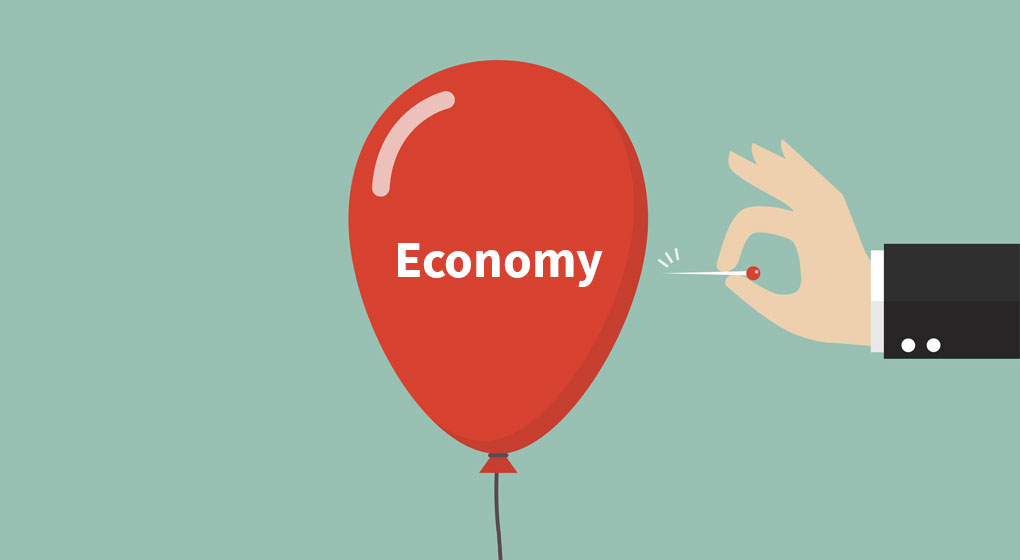Brexit impact document paints a grim picture for the UK food industry
The Committee for Exiting the EU last week finally agreed to publish a document detailing the Government’s Brexit impact assessments (part of which had been leaked in January). It paints a potentially grim picture for the food and drinks sector, including the meat industry.
The impact assessment document, entitled ‘EU Exit Analysis: Cross Whitehall Briefing’ models three ‘plausible’ Brexit scenarios and forecasts that, even under the most optimistic model, GDP is expected to fall by up to 2.6%. The worst-case scenario shows a fall of up to 10.3%.
The above figures take into account an estimated uplift in GDP of 0.2%, from a future trade deal with the US. However, it is worth noting that US trade policy has recently shifted towards a more protectionist stance and it’s unlikely this has been factored in to the report.
The analysis examines a 15-year period post Brexit. However, it does not specify when these reduced growth rates will happen. Growth could slow quickly in the short term before leveling off, or the slowdown could happen further down the track if supply chains take a long time to unwind. The timing of a slowdown will be different across the different sectors.
The three scenarios in detail
Optimistic scenario
A ‘soft Brexit using the EEA model commonly referred to as the ‘Norway model’. This would mean no tariffs on trade with the EU, reduced (but not eliminated) non-tariff barriers within a single market and ‘continued labour mobility’.
Expected fall in GDP: 0.6% to 2.6%
Average scenario
The negotiation of an ‘average’ free trade agreement (FTA) with low access to the EU market, some tariffs and barriers to trade and a ‘flexible’ labour mobility regime.
Expected fall in GDP: 3.1% to 6.6%
Pessimistic scenario
A ‘no deal’ exit with no trade agreement in place meaning that we revert to WTO rules. This would mean higher tariffs and higher non-tariff barriers along with a ‘strict’ labour mobility regime.
Expected fall in GDP: 5.0% to 10.3%
In an accompanying statement Hilary Benn, Chair of the Committee on Exiting the European Union, commented that “The analysis suggests that there will be an adverse effect on the economy of the UK and all its regions”, adding that the outcome of the Brexit negotiation will merely determine “the degree of impact”.
Effects on the food industry
The report states that “emerging findings suggest the largest effects would be on chemicals, food and drink, clothes, manufacturing, cars and retail”.
The food and drink sector show a predicted fall in GVA (Gross Value Added, which is a measure of the value of goods and services produced by an industry or sector) of between 2 and 10%.
Who will be affected?
From a national point of view the regions and devolved nations will be hardest hit, with the worst affected areas being the North East, West Midlands, North West and Northern Ireland.
The report also highlights the percentage share of trade that the UK represents to different EU countries. Germany, France and Denmark are the lowest at 7% of their overall trade, Luxembourg and Cypress at 14%, with Ireland the highest at 16% of overall trade being conducted with the UK.
However, in contrast, trade in goods and services with the EU accounts almost half (49%) of total UK trade.
Barriers to trade
The document acknowledges that ‘non-tariff barriers are the most important driver of trade impacts’. These non-tariff barriers (NTBs) include health and safety regulations, product standards (which include licensing and certification regimes), rules of origin checks, customs and border costs and competition laws.
From a national point of view the regions worst affected areas will be the North East, West Midlands, North West and Northern Ireland.
Agriculture, food and drink are estimated to be in the top four most impacted sectors when it comes to NTBs. In fact, the report notes that “in most cases the equivalent costs of NTBs in a ‘standard FTA’ are higher than any tariffs”.
Even if we just look at the impact of straight tariffs imposed on goods, both the ‘standard FTA’ agreement scenario and the WTO scenario assume tariffs of 12.7% on food and drink and 26.5% on agriculture.
What else could we expect?
The document acknowledges that this analysis is a work in progress and that upcoming work includes modeling of various other scenarios, both positive and negative.
One of those other scenarios worth mentioning is what the report terms ‘unilateral non-tariff barrier liberalisation’. In plain English, this would mean the UK agreeing to accept some of the standards and regulations governing the products of our future trading partners.
To quote the report: “We have a shared commitment to high regulatory standards. However, leaving the EU could provide the UK with the opportunity to regulate differently, across a range of social, environmental, energy, consumer and product standards”.
The document goes on to say that “in a WTO scenario, we would have freedom to set our import tariffs to zero. Initial analysis suggests that this may mitigate the WTO results by up to 0.2% of GDP”
This may be fine for some products but may also introduce cheaper, lower standard food products from overseas that compete more aggressively with those of British producers. If standards are no longer aligned, it will also reduce our ability to trade with the EU placing a further squeeze on the revenues of British exporters.
The question is how British firms would be compensated for any loss in trade.
The end of the beginning
The Government’s latest EU Exit Analysis document raises far more questions than it answers and represents the first of multiple rounds of modeling as negotiations evolve and the final deal takes shape.
The document makes interesting, if inconclusive, reading and can be found here.
However, it will be difficult for companies to make any firm plans based on what we know to date.
BMPA along with other industry associations are continuing to pressure the Government to maintain open lines of communication and to clarify as soon as possible which system we will be operating under after Britain’s exit from the EU.






